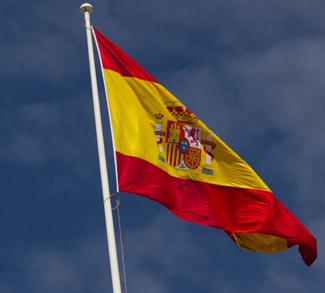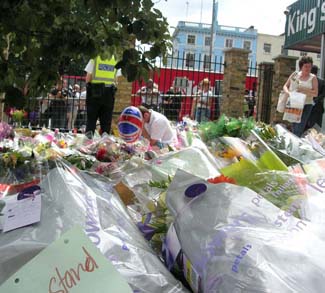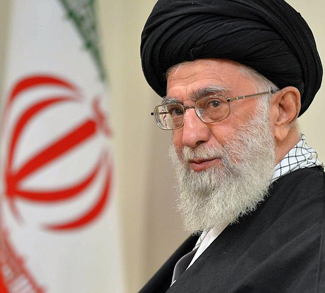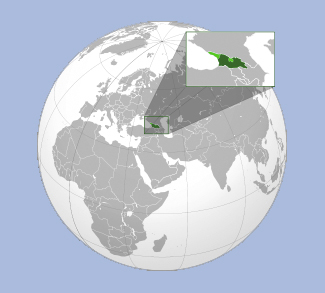Summary
This report examines the March 11, 2004 Madrid Bombings in respect to the possible involvement of criminal elements of the Spanish government.
Analysis
The Bombings
It was during morning rush hour on March 11, 2004 that ten explosions on four commuter trains occurred, resulting in the deaths of 191 people and leaving thousands injured.
The Suspects
The Bomb Squad
Within months after the bombings, it emerged that three of the accused bombers were police informants, and Emilio Suárez Trashorras, the man accused of supplying the 200kg of dynamite for the bombs, had in his possession the private phone number of Juan Jesús Sánchez Manzano, the head of Spain’s Civil Guard bomb squad.[1]
In March of 2003, one year prior to the bombings, Rafa Zouhier, an informant for the Civil Guard bomb squad reported to his supervisors that Trashorras and his brother-in-law, Antonio Toro, were illegally selling explosives in Spain. [2] Zouhier was subsequently put on trial for participation in the bombings, where he stated that he repeatedly informed his handler of the deal in buying explosives for the bombings: “In 2003 I warned that ‘these people want to sell 150 kilos’. I told them 1000 times.”[3] The majority of those involved in buying the explosives were also police informants.[4]
Surveillance and Assets
It was also reported in the Spanish press that 34 out of the 40 people initially suspected in the bombings were under surveillance before the bombings, including 24 of the 29 later arrested, as well as all seven who blew themselves up as police entered their premises just after the bombings. Said Berraj, a suspected plotter who worked closely with one of the three masterminds, met with Spanish intelligence officials regularly in 2003, fled Spain two days before the bombings and has yet to be found. A driver for one of the top suspects worked for Spanish intelligence, and one person suspected of bringing one of the bombs onto a train was possibly an informant, however, he lives freely in Morocco not wanted by Spanish authorities and is under orders not to talk to the press.[5]
Framed for Not Cooperating
The bombs were apparently exploded using remote control cell phone cards. Jamal Zougam, a Moroccan who ran the shop where the cell phone cards were sold, was among the many suspects implicated in the bombings. However, he claimed that he was twice approached by Spanish police to help inform on Islamic radicals, which he refused, and was told by a police officer while sitting in his jail cell that, “If you had collaborated with us, this wouldn’t have happened to you.”[6]
US Refuses to Help
It was reported in 2007 that the apparent Al-Qaeda leader who trained, created and directed the Madrid bombing cell had been kept in a CIA “ghost prison” for more than a year. He was arrested by Pakistani intelligence agents in 2005 and was handed over to the US within a month, yet Spanish authorities were refused permission to visit with or question the suspect.[7]
A US citizen and attorney who was arrested by the FBI shortly after the Madrid bombings as a suspect sued the US government for wrongful arrest and won $2 million. He was arrested because of an inaccurate fingerprint found at the scene of the bombings that was attributed to him. He claimed he was arrested because he is Muslim.[8] This is another example of how the case against the supposed terrorists continues to fall apart as it appears it is largely based on faulty evidence.
The Spanish Elections
The Spanish Prime Minister at the time of the bombings, José Maria Aznar, was head of the People’s Party (PP) whose main opposition was José Luis Zapatero of the Spanish Socialist Worker’s Party (PSOE). The bombings occurred three days prior to the general elections, in which the Socialist Party won with a wide majority. Immediately following the attacks, approximately 11 million members of the public marched all over Spain against the sitting government because the attacks were seen as a response to Spain’s involvement in the Iraq war, which Aznar supported against popular opinion.
Shaping Public Opinion
Before the bombings, the People’s Party looked as if it might win the election but without gaining a majority in the Congress of Deputies.[9] Could the attacks have aided the ruling party if public opinion was manipulated to see Aznar’s government as being hard-lined enough to deal with terror? Or, could it have been more in favour of the Socialist Party, which was able to point the finger at Aznar’s government for participation in the Iraq war?
Pointing the Finger
Blaming ETA
Immediately following the attacks, the Spanish separatist terror organization, ETA, was initially blamed. The government backed these claims as its platform was cracking down on ETA. It would also make the ruling party look good[10] in that it would justify the crackdown and make people more likely to trust a more conservative, hard-line government to deal with terrorism.
However, as more information came out, it became clear that ETA was not responsible and it looked as if it was linked to radical Islamists. The public perceived this as retribution for Spain’s participation in and support of the US-led war in Iraq. As a result they took to the streets in protest and voted the Aznar government out of office.
Destroying Information
After Zapatero came to power, he said that Aznar had “wiped all computer records at his office referring to the March 11 Madrid train bombings,” and he told a parliamentary commission that, “There is nothing from March 11 to March 14 in the prime minister’s office.” He further accused the Aznar government of “deliberately misleading Spaniards” the day of the attacks, after it was discovered that the explosives were not those used by ETA. He further made the claim that the bombings “were the sole responsibility of international Islamist terrorism.”[11] Aznar had also been accused of illegally holding onto secret intelligence reports regarding the Madrid bombings. He told a radio station that, “I have them because I was the prime minister.”[12]
Al-Qaeda Claims Responsibility?
Within days of the bombings, CNN reported on an apparent al-Qaeda document claiming responsibility for the attacks and outlining the reasoning behind them. One of the statements made was that, “We think the Spanish government will not stand more than two blows, or three at the most, before it will be forced to withdraw [from Iraq] because of public pressure on it. If its forces remain after these blows, the victory of the Socialist Party will be almost guaranteed – and the withdrawal of Spanish forces will be on its campaign manifesto.” This is, of course, exactly what happened. Essentially, the document was in favour of regime change in Spain in an effort to “separate Spain from its allies by carrying out terror attacks.”[13]
Al-Qaeda Supports US Geopolitical Ambitions
However, this document must not be viewed on face value. It must be viewed in the context of Al-Qaeda’s historical role as a creation of a US-sponsored intelligence network to serve US geopolitical goals. The history of Al-Qaeda as an asset of the US intelligence is well documented[14] from its inception to the present day,[15] as well as the fact that it tends to operate in favouring the geopolitical goals of not only the US, but of major oil companies.[16]
Interpreting the Claim
In this context, the Al-Qaeda statement regarding Madrid could be viewed as an attempt to manipulate public opinion. If Al-Qaeda comes out in support of changing the Spanish administration in favour of the Socialist Party, then perhaps the people would get behind the PP, not wanting to give Al-Qaeda what it wanted. As an example of this type of tactic, four days before the 2004 elections in the United States, an Al-Qaeda tape of Osama bin Laden was released in which he admitted responsibility for the 9/11 attacks, and which, according to John Kerry, had a huge impact on his campaign, as, “we were rising in the polls up until the last day when the tape appeared. We flat-lined the day the tape appeared and went down on Monday.”[17]
Perhaps the Al-Qaeda statement on Madrid had the covert intent of justifying the Spanish presence in Iraq, support for the US-led War on Terror and thus, for the Aznar government’s hard-line policies. However, if this was the intent, it nonetheless backfired. It also begs the question of why Aznar’s government initially blamed ETA, as it appeared to fear a backlash from the implication of Islamic radicals. Considering the benefit the attacks gave to the Zapatero government in ensuring victory at the elections, it is also possible that his government may have had a strategic interest behind the bombings, or at least on covering them up. However, the Aznar government was in power and had authority over the Spanish Civil Guard and intelligence, which had heavily infiltrated and monitored the suspected terrorists.
The Explosives
There are many contradictory claims of what explosives were used in the bombings. Aznar’s government initially claimed that the explosives were dynamite usually used by ETA, although this was later proven false.[18]
It was reported that an unexploded bag was found which contained “22lbs of explosive with 2lbs of nails and screws packed around it as shrapnel to increase its killing power.”[19] However, the Chief coroner disputed claims of shrapnel being found in any of the bodies.[20]
The provincial chief of Spain’s Civil Guard bomb squad, known as TEDAX, stated that dynamite could not have caused the damage seen done to the trains and that it had to have been a type of military explosive, such as C3 or C4.[21] Could the bags have been placed at the scene following the attacks to imply that those were the explosives used, and to counter any claims of military explosives being used?
The Trials
In October of 2007, 28 people were charged in the Madrid bombings by a Spanish court, 21 of which were convicted. An Egyptian, Rabei Osman Sayed Ahmed, or “Mohamed the Egyptian”, who allegedly masterminded the attacks was acquitted of all charges.[22] He had many Al-Qaeda ties and even spent many years in the Egyptian Army.[23]
In July of 2008, a Spanish court cleared four of the previously 21 convicted people of involvement in the attacks.[24] Clearly, this raises the question of the validity of the claims of these “radical Islamists” in planning and carrying out the attacks on Madrid.
Conclusion
The most logical solution for solving this complex issue would be to hold a new, independent trial and/or investigation in which the Spanish Civil Guard bomb squad and Spanish intelligence are investigated for their connections to the various accused terrorists, as well as issuing subpoenas to both Aznar and Zapatero to testify about their knowledge of the attacks, and perhaps even bring charges against Aznar for destroying evidence of the bombings. There does not appear to be enough evidence to state specifically who carried out the attacks, as the official story continues to fall apart as more of the accused are acquitted. Also, it is difficult to state flatly between Aznar and Zapatero who would have more likely been behind any such event, if indeed either of them were. There is also the possibility that it was a Gladio-like operation, operating within elements of Spanish intelligence, without the implicit knowledge of the Spanish authorities.
Andrew G. Marshall is a contributor to Geopoliticalmonitor.com
Sources:
[1] Edward Owen, Bomb squad link in Spanish blasts. The Times Online: June 19, 2004: http://www.timesonline.co.uk/tol/news/world/article447363.ece
[2] History Commons, March 2003: Informant Gives Spanish Police Big Tip That Could Stop Madrid Train Bombings. Center for Cooperative Research: http://www.www.cooperativeresearch.org/context.jsp?item=a061804bombsquad
[3] News Limited, Suspect ‘warned police of bomb threat’. News.com.au: February 28, 2007: http://www.news.com.au/story/0,23599,21300638-1702,00.html
[4] History Commons, September 2003-February 2004: Majority of Participants in Deal to Buy Explosives for Madrid Bombings Are Informants. The Center for Cooperative Research: http://www.www.cooperativeresearch.org/context.jsp?item=a061804bombsquad
[5] History Commons, Shortly Before March 11, 2004: Vast Majority of Madrid Bombers Are Under Surveillance; Some Are Informants. Center for Cooperative Research: http://www.www.cooperativeresearch.org/context.jsp?item=a061804bombsquad
[6] CNN, Madrid suspect: Police framed me. CNN: February 19, 2007: http://aftermathnews.wordpress.com/2007/02/20/madrid-suspect-police-framed-me/
[7] Sean O’Neill, Spain furious as US blocks access to Madrid bombing ‘chief’. The Times Online: February 15, 2007: http://www.timesonline.co.uk/tol/news/world/europe/article1391123.ece
[8] Anne M. Peterson, Man Wrongly Arrested in Madrid Bombings Gets $2M. New York Sun: November 30, 2006: http://www.nysun.com/national/man-wrongly-arrested-in-madrid-bombings-
gets-2m/44374/
[9-10] AP, Voters Oust Spanish Government. CBS: March 14, 2004: http://www.cbsnews.com/stories/2004/03/15/world/main606205.shtml
[11] Giles Tremlett, Aznar ‘wiped files on Madrid bombings’. The Guardian: December 14, 2004: http://www.guardian.co.uk/world/2004/dec/14/spain.gilestremlett
[12] Giles Tremlett, Aznar accused over Madrid bomb papers. The Guardian: July 23, 2004: http://www.guardian.co.uk/world/2004/jul/23/spain.gilestremlett
[13] Brendan O’Neilly, Madrid ‘blueprint’: a dodgy document. Global Research: April 1, 2004: http://globalresearch.ca/articles/ONE404A.html
[14] Michel Chossudovsky, Al Qaeda and the “War on Terrorism”. Global Research: January 20, 2008: http://www.globalresearch.ca/index.php?context=va&aid=7718
[15] Seymour M. Hersh, Preparing the Battlefield. The New Yorker: July 7, 2008: http://www.newyorker.com/reporting/2008/07/07/080707fa_fact_hersh
[16] Peter Dale Scott, Al Qaeda, U.S. Oil Companies, and Central Asia. Global Research: July 30, 2005: http://www.globalresearch.ca/index.php?context=viewArticle&code=%20SC
20050730&articleId=762
[17] Adam Nagourney, Kerry Says bin Laden Tape Gave Bush a Lift. The New York Times: January 31, 2005: http://www.nytimes.com/2005/01/31/politics/31kerry.html
[18] AP, Madrid Massacre Probe Widens. CBS: March 11, 2004: http://www.cbsnews.com/stories/2004/03/12/world/main605547.shtml
[19] Isambard Wilkinson and Anton La Guardia, Millions rally in anger at Madrid bombers. The Telegraph: March 13, 2004: http://www.lebanonwire.com/0403/04031301TGR.asp
[20] Libertad Digital, “Ni clavos, ni tuercas, ni tornillos; no había metralla entre nuestros 191 muertos”. Libertad Digital: January 23, 2008: http://www.libertaddigital.com//nacional/ni-clavos-ni-tuercas-ni-tornillos-no
-habia-metralla-entre-nuestros-191-muertos-1276321976/
[21] Libertad Digital, Los TEDAX revisaron “dos veces” todos los vagones del 11-M sin encontrar Goma 2 ni la mochila de Vallecas. Libertad Digital: September 13, 2005: http://www.libertaddigital.com/index.php?action=desanoti&cpn=1276260669
[22] MSNBC News Services, What happened to key alleged bomb plotters. MSNBC: October 31, 2007: http://www.msnbc.msn.com/id/21559051/
[23] The Fifth Estate, Madrid: The Prime Suspect. CBC: December 1, 2004: http://www.cbc.ca/fifth/warwithoutborders/suspect.html
[24] Al-Jazeera, Four acquitted of Madrid bombings. Al-Jazeera: July 17, 2008: http://english.aljazeera.net/news/europe/2008/07/2008717115336564354.html




